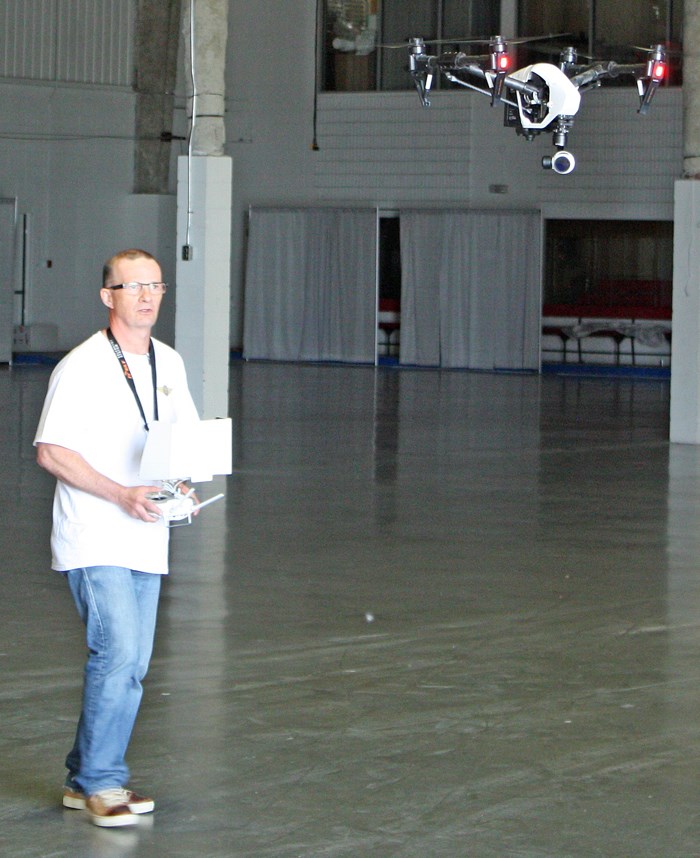Perhaps the most popular seminar of the Yorkton Film Festival over the weekend was the Saturday morning drone demonstration.
Jack Tunnicliffe and Tom Davidson of Java Post Production and Aerial Photography kept a rapt if somewhat hungover roomful of filmmakers on the edge of their seats with the seemingly limitless potential of Unmanned Aerial Vehicles (UAVs) for the film industry.
“The demand is going through the roof right now,” Tunnicliffe said. “We got into this a couple of years ago seriously and were really having trouble finding enough customers. I’m not really sure why, I thought there would have been a lot more excitement early, but there’s more excitement now.”
The demand is being driven mostly by industry, he explained.
“A lot of it is coming from big business, from potash mines, K+S and Mosaic, and they have suddenly realized what they can do in terms of collecting data and so on.”
About 30 per cent of their business, though, is for film. Java Post, in fact, did the aerial shots for both of the big movies that came out of Saskatchewan in the past couple of years, Wolfcop and Corner Gas.
It was only a few years ago that the technology reached the sweet spot of quality combined with affordability. Tunnicliffe ascribes most of that progress to the Chinese.
He believes they are only scratching the surface right now.
“When the camera came along, suddenly there were all sorts of uses, we can take it to the bottom of the sea and other things,” he said. “There are ways these aerial photo devices have not even been used yet and now we’re starting to mount infrared cameras and LIDAR [remote sensing technology like RADAR but using lasers].”
For filmmakers it is a boon. Davidson did a comparison of a traditional helicopter shoot with a UAV. For one day, the cost is an order of magnitude less, approximately $30,000 versus $3,000. That’s the difference between getting the shot and not for a lot of smaller production companies.
But Tunnicliffe also pointed out it’s not just the cost savings, but the versatility. Drones can sub not just for helicopters, but booms and cranes and dollies. They can skirt the tips of wheat fields, file millimetres from the ground and go through tight spaces like canopies of trees and alleyways, where a big helicopter could never go.
There are some limitations, however. On the technical side, for example, they can’t really fly in high winds and get reasonable footage.
The main limitation, though, is regulatory.
“What they can’t do right now is beyond line of sight, so that’s what everybody in my world is talking about,” Tunnicliffe said. “We have this really good camera, this really good monitoring, we are looking at what the helicopter is seeing, but Transport Canada says you can only fly out until that thing becomes a little dot then bring it home, but why not be able to fly beyond?”
The certification industry is currently testing beyond line of sight and will be lobbying Transport Canada to allow advanced certification for accomplished pilots. Tunnicliffe expects to see that within the next couple of years.
Filmmakers were so enthralled with the demo, the session went overtime by an hour.



